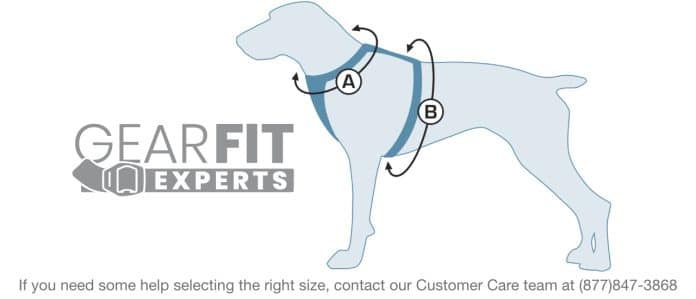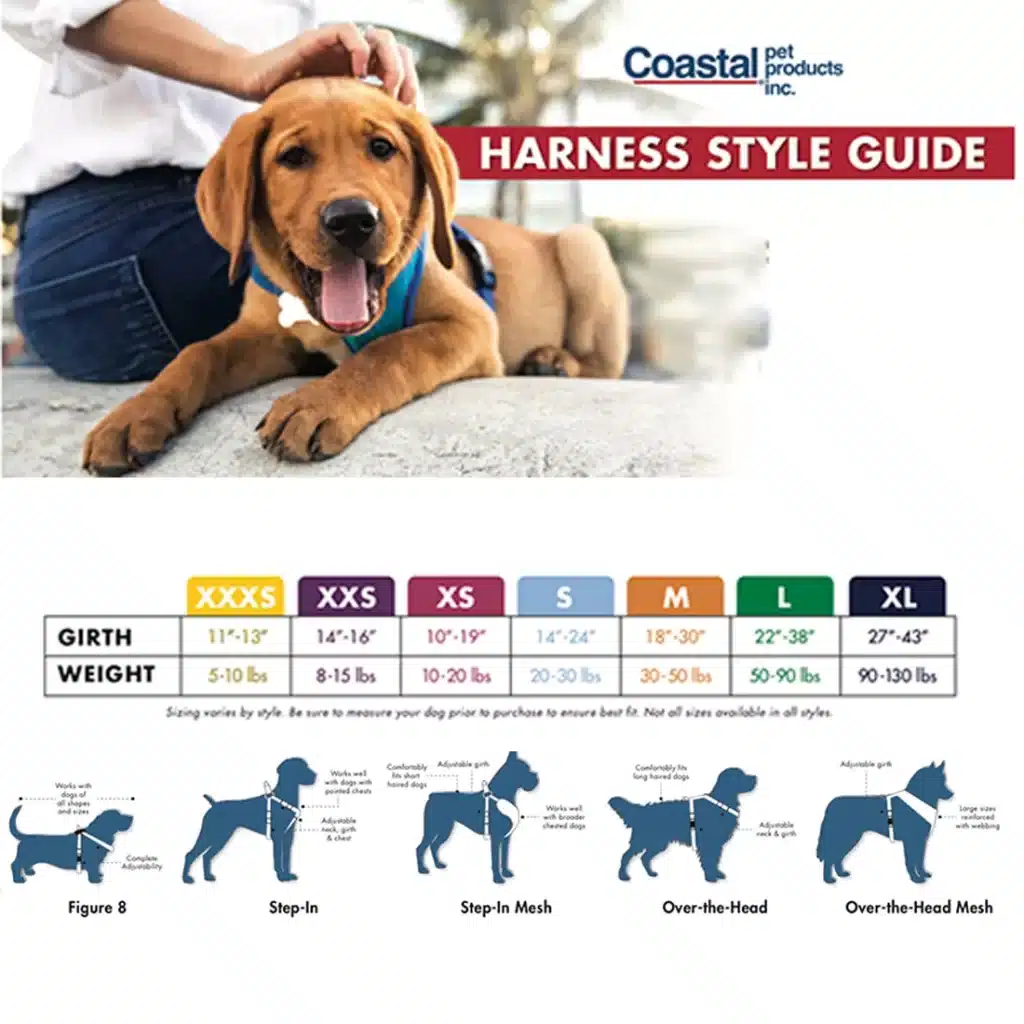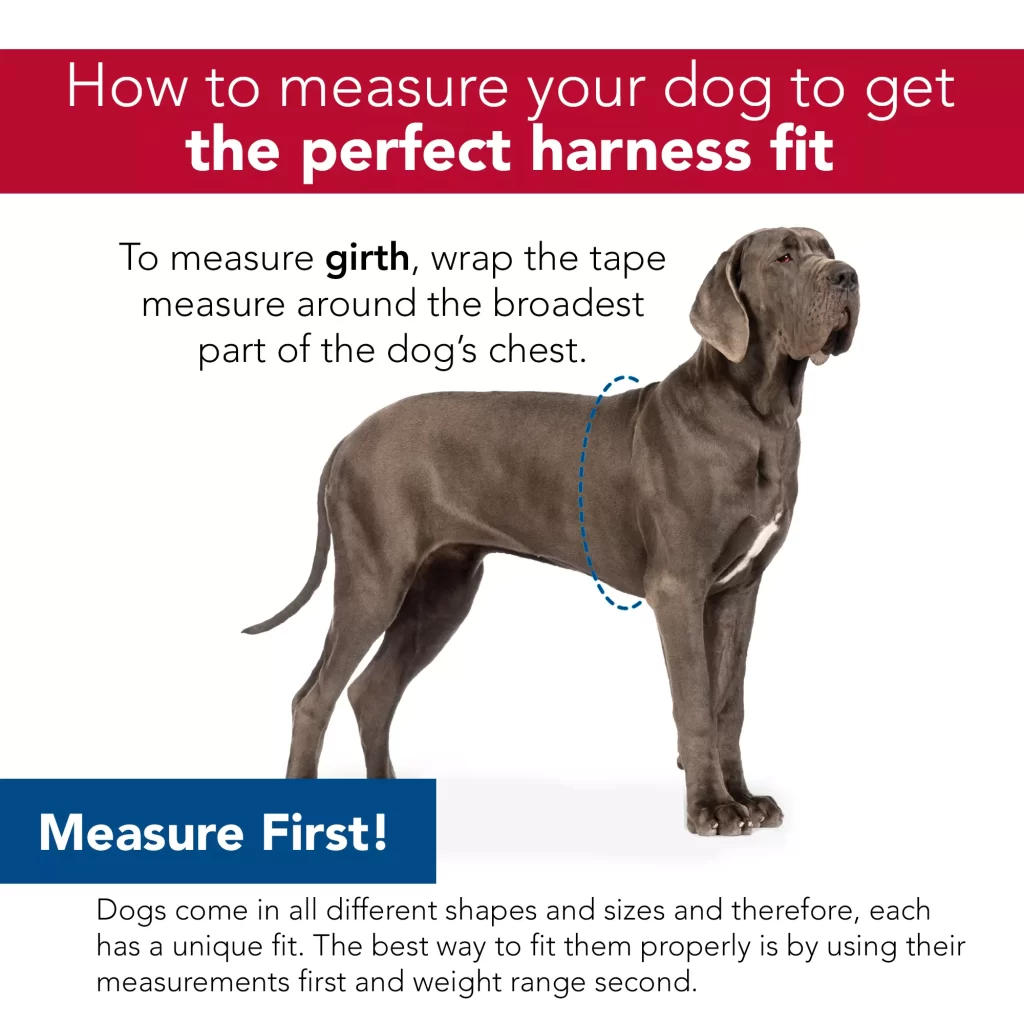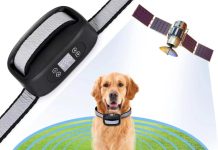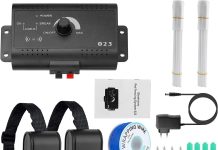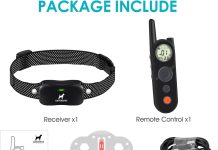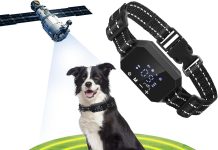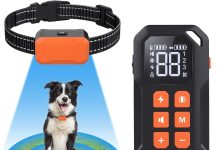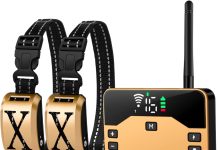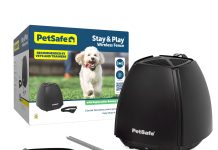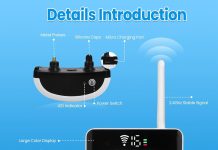Choosing the right dog harness size for your furry friend can sometimes be tricky. With such a wide variety of options available, ensuring proper fit and comfort for your pup is essential.
Whether you’re a seasoned pet owner or a first-time dog parent, this article will provide practical tips and advice on selecting the perfect harness size for your dog, ensuring their safety and happiness during every walk or outing.
So, let’s get started and find the best fit for your canine companion!
Factors to Consider
Choosing the right dog harness size is crucial for your furry friend’s comfort, safety, and well-being. There are several factors that you should take into consideration when determining the correct size. By evaluating these factors, you can ensure that your dog’s harness fits properly and provides the necessary support and control. Let’s explore these factors in more detail.
Table of Contents
Weight of the Dog
Your dog’s weight plays a significant role in selecting the appropriate size of the harness. Larger dogs will require harnesses with more substantial materials and broader straps to distribute the weight evenly. Conversely, smaller dogs will benefit from lightweight and narrower harnesses that won’t restrict their movement.
Chest Circumference
The chest circumference measurement is crucial when choosing a harness for your dog. This measurement helps determine the harness size that will comfortably wrap around your dog’s chest. To ensure a proper fit, measuring your dog’s chest at the widest point, typically just behind the front legs is essential.
Neck Size
In addition to considering your dog’s chest circumference, measuring their neck size is equally important. The neck measurement helps determine the harness size that will adequately fit around your dog’s neck without causing discomfort or chafing. Be sure to measure the circumference of your dog’s neck at the base, where the neck blends into the body.
Dog’s Breed
Different dog breeds have varying body structures, which can affect the fit and size of a harness. Some breeds may have broader chests, while others may have narrower necks. It’s essential to consider your dog’s breed when selecting a harness to ensure the proper fit and comfort. Sure, harnesses are designed to accommodate specific breeds’ unique body shapes.
Age and Growth
Puppies and young dogs are constantly growing, so choosing a harness that can be adjusted as they grow is crucial. Look for harnesses with adjustable straps or multiple sizing options to accommodate your dog’s changing body. This will save you from purchasing a new harness every few months.
Coat Type
The type and length of your dog’s coat can impact the fit and comfort of a harness. For dogs with thick or long fur, you may need to consider a harness with wider straps to prevent matting or discomfort. On the other hand, dogs with short coats may require a harness with softer padding to prevent rubbing against their skin.
Activity Level
Consider your dog’s activity level when choosing a harness. If you have an active dog that loves to run, jump, and explore, you’ll want a harness that allows for a full range of motion. Look for harnesses that are designed to be lightweight and non-restrictive while providing the necessary support for your dog’s adventurous spirit.
Health Status
If your dog has any health conditions or physical limitations, choosing a harness that accommodates their needs is essential. Dogs with back or joint problems may benefit from a harness that provides extra support and stability. Additionally, dogs with respiratory issues may require a harness that doesn’t pressure their neck or chest, allowing for easier breathing.
Comfort and Mobility
Ensuring your dog’s comfort and mobility should be a top priority when choosing a harness. A well-fitting harness should not restrict your dog’s movement or cause discomfort or chafing. Look for harnesses with adjustable straps and padded areas to provide maximum comfort. Avoid harnesses that are too loose or too tight, as they can hinder your dog’s natural gait and overall happiness.
Adjustability and Fit
The adjustability and fit of a harness are crucial for ensuring a proper and secure fit. Look for harnesses with multiple adjustment points, such as adjustable straps or buckles, to fine-tune the fit to your dog’s specific measurements. A harness that can be adjusted appropriately will provide a snug and secure fit without causing any discomfort or restricting movement.
Measuring Your Dog for a Harness
Correctly measuring your dog is the first step in selecting the proper harness size. Following these simple steps, you can accurately obtain the necessary measurements and ensure a proper fit.
Using a Tape Measure
A flexible tape measure is the easiest and most accurate way to measure your dog for a harness. If you don’t have a tape measure, you can use a piece of string or ribbon and a ruler to measure your dog and then compare the measurements to a tape measure.
Measurements Needed
To measure your dog for a harness, you must obtain the following measurements: chest circumference, neck size, and back length. These measurements will help determine the appropriate size range to consider for your dog.
Chest Circumference
To measure your dog’s chest circumference, wrap the tape measure around the broadest part of their chest, just behind the front legs. Make sure the tape measure is snug but not too tight. Take note of the measurement in inches or centimeters.
Neck Size
To measure your dog’s neck size, wrap the tape measure around the base of its neck, where the neck blends into the body. Again, ensure that the tape measure is snug but not too tight. Record the measurement in inches or centimeters.
Back Length
To measure your dog’s back length, start from the base of its neck and measure along its spine to the base of its tail. Be sure to follow the natural curve of their back while taking this measurement. Record the measurement in inches or centimeters.
Different Types of Harnesses
Several types of harnesses are available, each catering to different needs and preferences. Understanding the differences between these harnesses is essential to choosing the right one for your dog.
Step-in Harness
A step-in harness is precisely what it sounds like – your dog steps into the harness, and it wraps around its chest and back. This type of harness is easy to put on and remove, making it great for dogs who resist having something put over their head. Step-in harnesses are secure and comfortable and distribute pressure evenly across your dog’s chest.
Over-the-Head Harness
An over-the-head harness is designed to be slipped over your dog’s head and fastened around its chest. While some dogs may find this type of harness easier to put on than a step-in harness, others may resist having something put over their head. Over-the-head harnesses provide a secure fit and a high level of control.
Vest Harness
Vest harnesses are popular for small dogs requiring extra support or having health conditions. These harnesses come in the shape of a vest, with straps that fasten around your dog’s chest and back. They provide added stability and distribute pressure evenly, making them suitable for dogs with back or joint problems.
Front-Clip Harness
Front-clip harnesses have a leash attachment point on the front of the dog’s chest. This type of harness is beneficial for dogs that tend to pull on the leash, as the front attachment point redirects their pulling motion to the side, discouraging pulling behavior. Front-clip harnesses provide better control and make it easier to discourage unwanted pulling.
Back-Clip Harness
Back-clip harnesses have a leash attachment point on the top of the harness, near your dog’s shoulder blades. This type of harness is easy to put on and remove and is suitable for dogs walking calmly on a leash. Back-clip harnesses provide a comfortable fit and are well-suited for dogs with respiratory issues as they don’t put pressure on the neck.
No-Pull Harness
As the name suggests, no-pull harnesses are designed to discourage dogs from pulling on the leash. These harnesses typically have front and back attachment points and feature additional control points or clips. No-pull harnesses give you leverage to gently redirect your dog’s pulling behavior without causing harm or discomfort.
Sizing Charts and Guides
When selecting a harness, referring to sizing charts and guides can be an invaluable resource. These tools offer guidance based on your measurements and help you choose the correct size range for your dog.
Manufacturer’s Guidelines
Many harness manufacturers provide sizing charts or guidelines on their websites or packaging. These charts usually correlate your dog’s measurements with the appropriate harness size. Follow the manufacturer’s recommendations closely to ensure a proper fit.
Online Resources
There are numerous online resources available that can help you determine the appropriate harness size for your dog. Look for reputable websites or forums where dog owners and experts share their experiences and recommendations. These resources often provide sizing guides and user reviews that can assist in your decision-making process.
Professional Assistance
If you’re unsure about measuring your dog or selecting the proper size, don’t hesitate to seek professional assistance. Consult a dog trainer, veterinarian, or pet store employee with experience fitting harnesses. They can provide valuable guidance and recommendations tailored to your dog’s needs.
Custom-Made Harnesses
Custom-made harnesses may be the best option for dogs with unique body shapes or special requirements. These harnesses are designed and tailored to fit your dog’s measurements, ensuring the perfect fit and maximum comfort. Custom-made harnesses may be more expensive, but they offer a personalized solution for dogs with specific needs.
Trying On and Adjusting the Harness
Once you have selected a harness that fits within the appropriate size range, it’s essential to try it on and properly adjust it for your dog. Here are some key factors to consider during this process.
Proper Fitting
A properly fitted harness should sit snugly against your dog’s body without being too tight or loose. When fastened, you should be able to fit two fingers comfortably between the harness and your dog’s skin. If the harness is too tight, it can restrict your dog’s movement and cause discomfort. Conversely, if it’s too loose, your dog may be able to escape or slip out of the harness.
Ease of Putting On and Removing
Consider how easy it is to put the harness on and remove it from your dog. Some dogs may tolerate one type of harness better than another. If your dog shows resistance or anxiety during the process, try alternative harness styles until you find the one you feel most comfortable with.
Adjustability Features
Check the adjustability features of the harness to ensure you can achieve the optimal fit for your dog. Look for adjustable straps, buckles, or clips that allow you to customize the fit to your dog’s specific measurements. This will ensure a secure, comfortable fit that doesn’t restrict your dog’s movement.
Range of Motion
Observe your dog’s range of motion while wearing the harness. Your dog should be able to walk, run, sit, and lie comfortably without restrictions. Ensure that the harness allows your dog to move freely without causing any discomfort or chafing. If you notice any signs of discomfort or difficulty in movement, readjust the harness as needed or try a different size or style.
Comfortable Straps and Padding
Pay attention to the comfort of the straps and padding of the harness. Check for rough edges, seams, or materials that may cause irritation or chafing. Look for harnesses with soft, padded areas that provide extra cushioning and prevent rubbing against your dog’s skin. Comfortable straps and padding help ensure your dog enjoys wearing the harness for extended periods.
Importance of the Right Size Harness
Choosing the right size of harness is vital for several reasons. Let’s explore the importance of a properly fitted harness for your dog.
Prevents Escaping
A properly fitted harness significantly reduces your dog’s risk of escaping or slipping out of it while walking or playing. If the harness is too loose, your dog may be able to wiggle free and potentially put themselves in danger. Choosing the appropriate size and ensuring a snug fit can keep your dog secure and prevent accidental escapes.
Reduces Pulling and Choking
Using a properly-fitting harness can significantly reduce pulling on the leash and the associated risks. Harnesses that fit snugly and have front-clip attachment points distribute the force across the chest, providing better control and discouraging pulling behavior. It also reduces strain on the neck and throat, minimizing the risk of choking or other injuries.
Promotes Comfort and Mobility
A well-fitted harness ensures your dog’s comfort and freedom of movement. When a harness fits appropriately, it doesn’t restrict your dog’s natural gait or impede their range of motion. This allows your dog to walk, run, and play comfortably, promoting a healthy and active lifestyle.
Prevents Injury
An ill-fitting harness can cause discomfort, chafing, and injuries to your dog’s skin or muscles. A harness that is too tight can lead to restricted blood flow or put pressure on sensitive areas, causing pain or injury. On the other hand, a harness that is too loose can create friction, resulting in chafing or sore spots. You can minimize the risk of these potential injuries by selecting the proper size harness.
Enhances Control and Safety
A properly fitting harness gives you better control over your dog during walks, hikes, or other outdoor activities. It improves your ability to guide your dog’s movements, ensuring their safety and preventing unwanted behaviors. With a secure and well-fitted harness, you can confidently navigate various environments and keep your dog by your side.
Common Mistakes to Avoid
When choosing a harness, there are several common mistakes that you should avoid. By being aware of these mistakes, you can make a more informed decision and ultimately provide the best harness for your dog.
Choosing a Size Too Small
One of the most common mistakes is selecting a too-small harness for your dog. Too tight a harness can cause discomfort, restrict movement, and even lead to injuries. Refer to the manufacturer’s sizing guidelines and accurately measure your dog to ensure the proper fit.
Choosing a Size Too Large
On the other hand, choosing a too-large harness can be just as problematic. A loose harness can result in your dog slipping out of it or becoming tangled in the straps. It can also cause rubbing, chafing, or discomfort during movement. Measure your dog accurately and select a harness that provides a snug and secure fit.
Miscalculating Measurements
Incorrectly measuring your dog’s chest circumference, neck size, or back length can lead to choosing the wrong size harness. Take your time and follow the measuring instructions carefully to ensure accurate measurements. If you’re unsure, seek assistance from a professional who can help you obtain precise measurements.
Ignoring Breed Specifics
Different dog breeds have unique body shapes and proportions. It’s crucial to consider your dog’s breed when selecting a harness, as sure harnesses are designed to cater to specific breed characteristics. Considering your dog’s breed will help ensure a proper fit and maximum comfort.
Not Considering Adjustability
When selecting a harness, choosing one that offers adjustability is essential. Dogs come in various shapes and sizes, and harnesses that can be fine-tuned to fit your dog’s specific measurements provide the best comfort and security. Avoid harnesses that do not offer adjustability, as they may not accommodate your dog’s body as they grow or change shape.
Ignoring Feedback from Dog
Pay close attention to your dog’s behavior and physical cues when trying on a new harness. Watch for signs of discomfort, such as rubbing, chafing, or attempts to escape the harness. If your dog seems uneasy or appears to be experiencing any discomfort, consider trying a different size or style of harness.
Not Consulting Professionals
If you’re unsure about which size or style of harness to choose, don’t hesitate to seek advice from professionals, such as dog trainers, veterinarians, or pet store staff. Their knowledge and experience can help guide you in the right direction and ensure you select the best harness for your dog’s needs.
Conclusion
Choosing the right dog harness size is crucial for your furry companion’s comfort, safety, and well-being. By carefully considering factors such as weight, chest circumference, neck size, breed, and activity level, you can narrow down the options and choose a harness that fits perfectly.
Measuring your dog accurately using a tape measure and following the manufacturer’s guidelines or consulting online resources will ensure you select the appropriate size within the available range.
Trying to adjust the harness correctly and paying attention to comfort, mobility, and adjustability features are essential to achieve the perfect fit. The correct size harness promotes safety, prevents escaping and injury, reduces pulling and choking, and enhances control and comfort.
By avoiding common mistakes, such as choosing a size too small or too large, miscalculating measurements, ignoring breed specifics or adjustability, and not consulting professionals, you can confidently select the correct size harness for your beloved dog.
Your furry friend will be grateful for the comfort, freedom of movement, and security a well-fitted harness provides.

